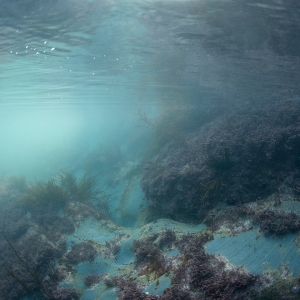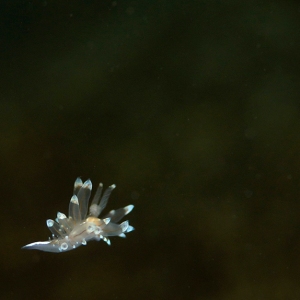The Photographic Angle & Royal Photographic Society Environmental Awareness Bursary 2014
The Marine Conservation Zones
Project Report
This project began from a strong desire to share passion of marine life, and a wish to reach and educate as many people as possible, about the important life that is right on our doorsteps, and so often ignored.
The idea of this project was to travel as many places as possible, and show a variety of marine life, that was either in the process of being awarded the marine conservation zone status, or may have already been awarded it. The label of Ma rine Conservation Zone varies from each site, their protection specifics are decided upon through assessment of the habitat and species within it. When this project began, there were already some 27 zones in place, and now, 1 year on, there have been 23 more added to this number. Considering the huge amount of coastline we are privileged to have around England, this number of 50 zones is still fairly low. The decision on the final round of zones is still not confirmed until 2016, and so you could say that this part of the project is still ongoing.
rine Conservation Zone varies from each site, their protection specifics are decided upon through assessment of the habitat and species within it. When this project began, there were already some 27 zones in place, and now, 1 year on, there have been 23 more added to this number. Considering the huge amount of coastline we are privileged to have around England, this number of 50 zones is still fairly low. The decision on the final round of zones is still not confirmed until 2016, and so you could say that this part of the project is still ongoing.
The other main driving force behind an underwater project was not to just highlight the areas that need protection, but also just to engage viewers with the ocean. It’s no secret that in recent years a growing number of children, and adults,  are disconnected from nature. Furthermore, it’s arguable that many people are even more disconnected from marine life, and what’s under our seas, purely because it is ‘out of sight, out of mind’. By bringing the marine life out of the water with images, showing the colourful species and habitats, the project aimed to gain viewers interest in interacting with nature, and more specifically the ocean, more. Marine life is so intriguing that if one is only given the opportunity, it is easy to become hooked, to start to become fascinated with this underwater world, to love it, and to care about it.
are disconnected from nature. Furthermore, it’s arguable that many people are even more disconnected from marine life, and what’s under our seas, purely because it is ‘out of sight, out of mind’. By bringing the marine life out of the water with images, showing the colourful species and habitats, the project aimed to gain viewers interest in interacting with nature, and more specifically the ocean, more. Marine life is so intriguing that if one is only given the opportunity, it is easy to become hooked, to start to become fascinated with this underwater world, to love it, and to care about it.
 With these thoughts began the origin of the Marine Conservation Zones project, however the practicalities of it were a little more complex. The huge variety in the designated zones, and the possibilities of documenting so many different sites and the complex life within them is almost overwhelming.
With these thoughts began the origin of the Marine Conservation Zones project, however the practicalities of it were a little more complex. The huge variety in the designated zones, and the possibilities of documenting so many different sites and the complex life within them is almost overwhelming.
The potential for covering this project is huge, one that could be documented over many years and still leave much to be explored. To make it more manageable, more accessible, local zones were selected as the photographic sites.
Towards the beginning of this project, many of the areas visited for documentation were deeper, scuba diving sites, accessed via rhib or other dive boat. These habitats are visually different to the shallower shore sites, but often the life within them is found right up to the shoreline, such as the stalked jellyfish, or nudibranch species, which can be found from rock pools, to deep wrecks.
As the project developed however, it felt somewhat contradictory to try encouraging people to visit the sea, and yet be sharing images of depths and places only reachable through boats and scuba equipment.
With the limitations of poor weather, diving access, and this thought, it seemed right to continue investigating the shore based marine conservation zones; those sites which everyone can enjoy, not just the lucky few divers.
When visiting certain areas for  the first time, such as Padstow and the Surrounds MCZ, it was clear the potential for imagery was vast. The natural shapes and colours within this one area were surprising even to myself, and hours could be spent just in the shallows of the coastal rock pools. From being inspired by the beautiful contours of the rock formations, next to the bright colours of the seaweeds, even in the cold of winter, confirmed that there are always surprises and things to see in the ocean, no matter where you go. Even when visiting beaches and rocky sites on moody, rainy, days, the marine life still held its colour and form, affirming my own love for this almost hidden world.
the first time, such as Padstow and the Surrounds MCZ, it was clear the potential for imagery was vast. The natural shapes and colours within this one area were surprising even to myself, and hours could be spent just in the shallows of the coastal rock pools. From being inspired by the beautiful contours of the rock formations, next to the bright colours of the seaweeds, even in the cold of winter, confirmed that there are always surprises and things to see in the ocean, no matter where you go. Even when visiting beaches and rocky sites on moody, rainy, days, the marine life still held its colour and form, affirming my own love for this almost hidden world.
At this point, the project’s direction began to take a more specific path. By selecting more of the coastal zones, and focusing on the patterns and colours available within them, the images for this story began to follow a more distinct style.
Working in shallow water, not only meant a ream of beautiful species available (reefs are more active in the first 10m of water than anywhere else), but also opened up the possibility of experimenting with the light a lot more. The water surface was usually calmer inshore, and therefore acting as a mirror, reflections of the underwater world were something I grew interested in.
 Moreover, I encouraged myself to not get obsessed in finding rare species. Even the common marine life can be complex in its physical form; the regularly viewed species can be showed in a new light when composed properly. The reality of finding rare species when diving/visiting these zones is slim, and the common species are always underestimated, it makes no sense to simply disregard something that is beautiful, because it is common.
Moreover, I encouraged myself to not get obsessed in finding rare species. Even the common marine life can be complex in its physical form; the regularly viewed species can be showed in a new light when composed properly. The reality of finding rare species when diving/visiting these zones is slim, and the common species are always underestimated, it makes no sense to simply disregard something that is beautiful, because it is common.
I had originally begun to document not only the underwater scenes but also people interacting with them too, surveying, snorkeling and diving. I discovered that though these images were interesting, they weren’t as powerful visually as the more simple compositions, focusing on just the marine life. These images would feature in a larger documentation of the project, but a stronger sequence was formed from being much more specific in location and style.
The choice of a square crop as opposed to the standard rectangular image was for a number of reasons, to simulate a window, a view into the underwater world, and also to try and highlight the focal point of each image, more obvious in the species as opposed to habitat photographs. By constraining the image to the square shape, it highlights the symmetry within various images, and adds simplicity reminiscent of analogue photography to the overall aesthetic.
The aim of this series of images was always to show variety, in shape, colour, and species. I want there to be something for everyone to appreciate in the sequence, to appeal to as many people as possible. Ultimately, the images taken were through my own love and appreciation for these scenes. Through forcing myself to look closer at the marine life I may have gotten used to, I emphasised my  own passion for the sea, and can only hope that this is conveyed by the images too.
own passion for the sea, and can only hope that this is conveyed by the images too.
From here, I hope to eventually develop an exhibition of these images and this story, though I would like to continue to work on this project further. As mentioned before, it is still ongoing, and I believe there is much yet to discover. In the meantime, I will be sharing my stories, images, and knowledge of the story through social media. Photography is a wonderful tool for conservation and education; and just the simple fact of sharing snapshots of what life underwater can look like can encourage more positive thinking towards marine life, and eventually protection for it too. The first step towards protection is creating a reason to care, and that’s what photography can do. You can’t argue with an image, and every image in this sequence is a statement of what is accessible to everyone. Photography can change people’s minds about what may have been unknown before, and by focusing on these simple bright images, the underwater world is made available to everyone.





Hi Charlotte,
I’ve kindly been passed your details by Liz Williams, Education Manager at the Royal Photographic Society as you are a recent winner for the Environmental Awareness bursary.
The Royal United Hospital in Bath has an award winning arts programme and we frequently work with the RPS. In the New Year, we intend to show Wildscreen’s Fragile exhibition from mid-January until mid-April. Please could you let me know if you would like to show your work alongside? There is capacity for around 50 of 50x40cm frames or the equivalent and this can be shared we other photographers.
I attach some information about exhibiting at the RUH.
Look forward to hearing you.
Best wishes,
Tony
Tony Smith
Exhibitions Manager
T: 01225 824 987
@artatruh
http://www.ruh.nhs.uk/art